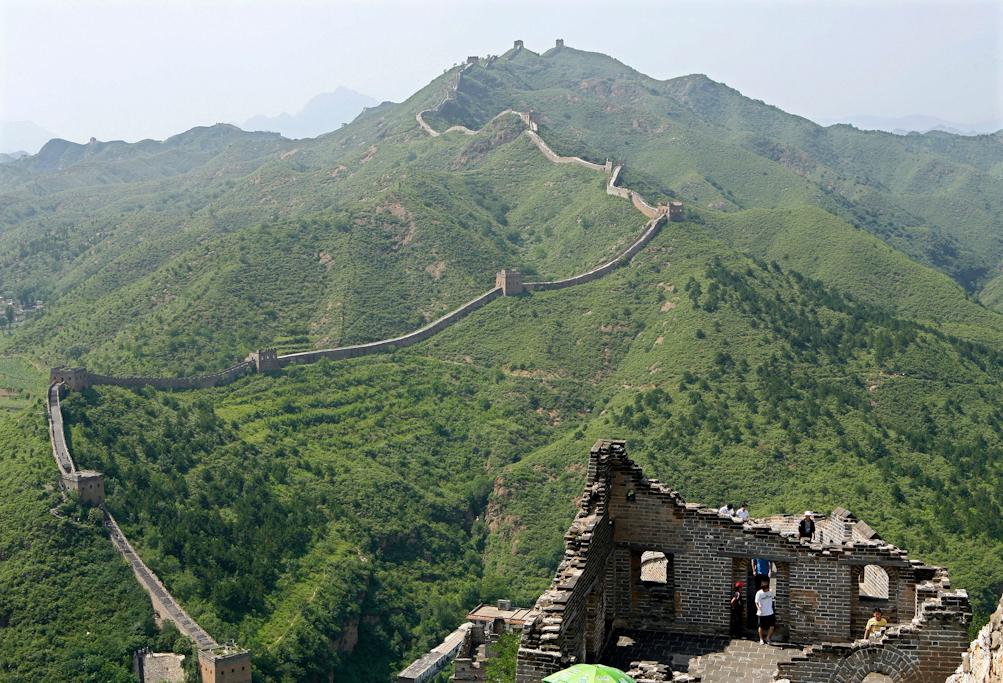Portions of Great Wall of China collapse after heavy rain
Tourists climb up a dilapidated section of the Great Wall of China, at Simatai, northeast of Beijing, 1 July 2007. This Ming-dynasty Wall was built as one of four major strategic strongholds for defensive puropses from tribes invading from the north.
The Great Wall of China may be ancient, but it isn't immune to the weather.
RT.com reports that portions of the ancient structure in Northern China have collapsed following heavy rains. The portion of the wall is located in Dajingmen, in Hebei Province.
36 meters of the wall have collapsed, and workers are attempting to reinforce other portions that may be at risk.
More from GlobalPost: Beijing flooding kills 20, worst in 60 years
It's been a wet summer in China (and in the rest of Asia, too): GlobalPost reported in July that Beijing flooding killed 37 – the worst such weather event in 60 years. Over 30,000 people were displaced.
The iconic wall was begun in 220 B.C by Emperor Qin Shi Huang, according to UNESCO, and was added to until the Ming Dynasty, which ruled China until 1644. It remains of the largest military structures on the planet.
More from GlobalPost: Great wall of China length determined in five year study
Earlier in July, ABC News reported that a new five-year archeological study found the Great Wall was even longer than previously believed. The survey found its total length was a massive 13,170 miles, stretching across 15 provinces – more than twice the length that was previously reported.
The article you just read is free because dedicated readers and listeners like you chose to support our nonprofit newsroom. Our team works tirelessly to ensure you hear the latest in international, human-centered reporting every weekday. But our work would not be possible without you. We need your help.
Make a gift today to help us reach our $25,000 goal and keep The World going strong. Every gift will get us one step closer.
